Famille Rose Nine Peaches Vase
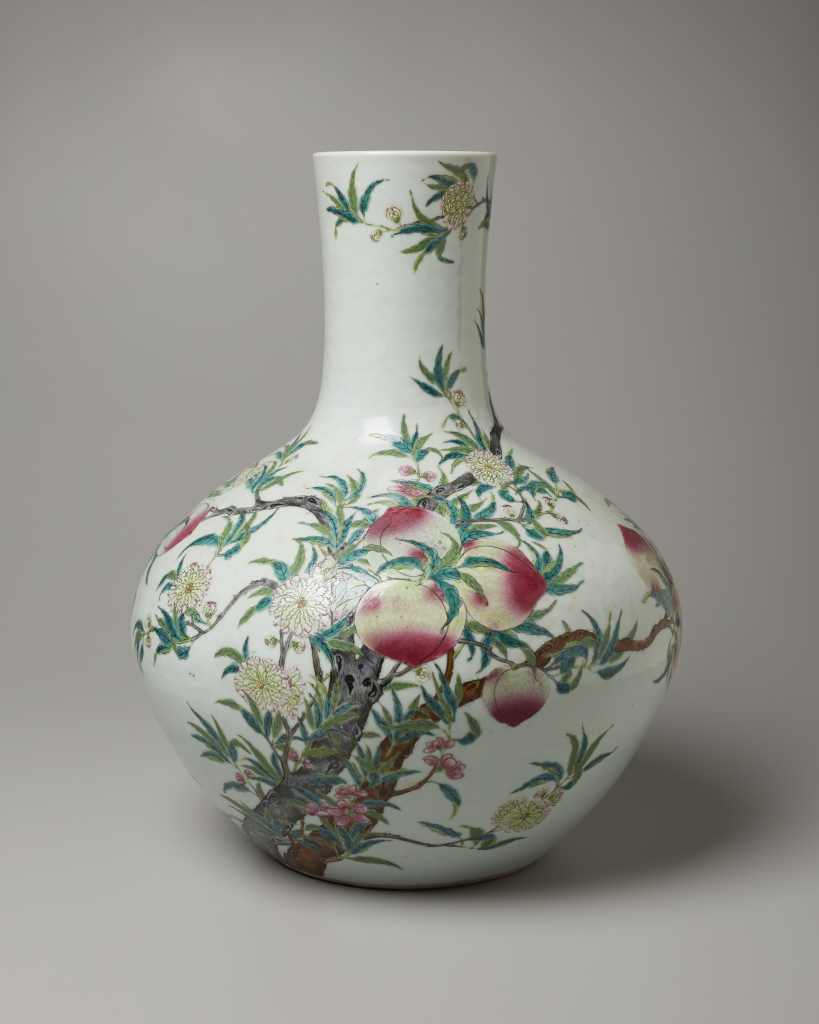
China, Jiangxi province, Jingdezhen kilns, Famille Rose Nine Peaches Vase, 19th century, porcelain with overglaze enamel painting with Dai Qing Qianlong nian zhi (made during the Qianlong reign) in underglaze blue, Gift of Mrs. Margaret Petti, public domain, 94.24.1
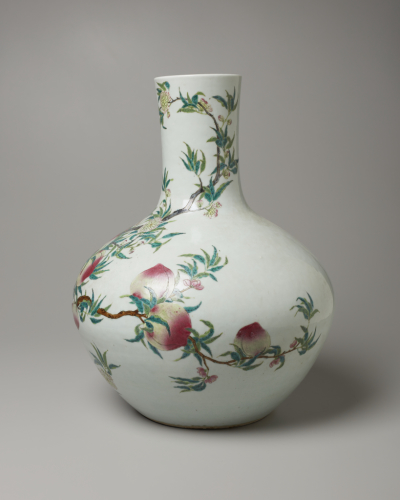
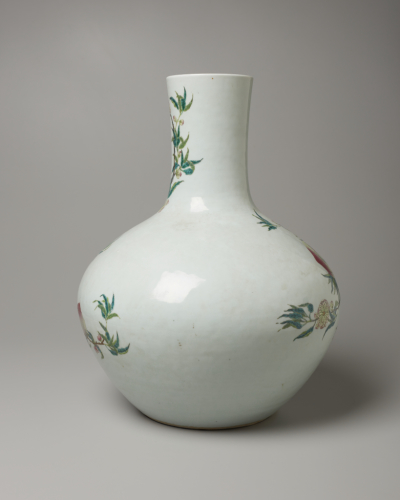
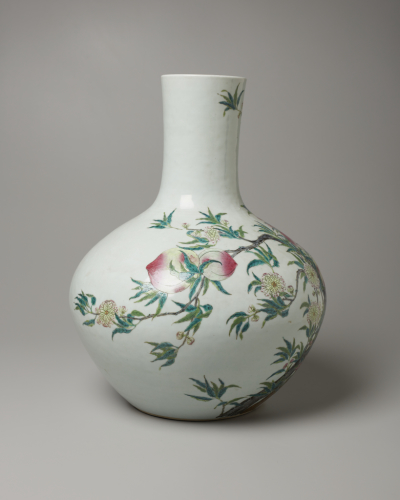
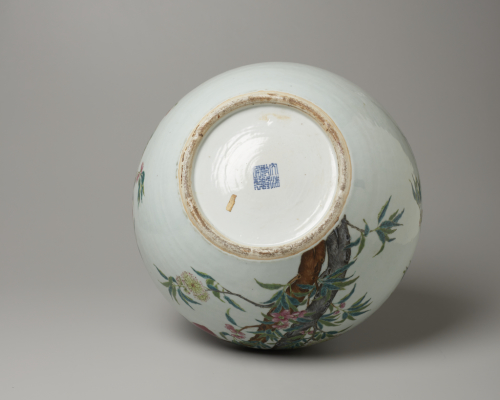
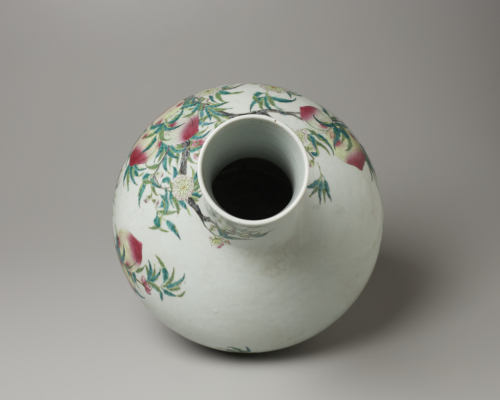
This work is not currently on view.
- Title
Famille Rose Nine Peaches Vase
- Related Titles
original language: 粉彩九桃紋壺 中國江西省景德鎮窯 清
- Artist
- Date
19th century
- Period
China: Qing Dynasty (1644-1911)
- Medium
porcelain with overglaze enamel painting with Dai Qing Qianlong nian zhi (made during the Qianlong reign) in underglaze blue
- Dimensions (H x W x D)
21 3/4 in x 18 in diam.
- Inscriptions & Markings
inscription: 大清乾隆年製, underglaze blue, base Transliteration (Translation): Dai Qing Qianlong nian zhi (made during the Qianlong reign) Language: Chinese
- Collection Area
Asian Art
- Category
Ceramics
- Object Type
jar
- Culture
Chinese
- Credit Line
Gift of Mrs. Margaret Petti
- Accession Number
94.24.1
- Copyright
public domain
- Terms
In Chinese lore, peaches symbolize immortality, and the number nine represents perfection and the eternal. The two auspicious motifs are brought together in this boldly decorated vase, where nine ripe peaches in beautiful shades of pink and pale yellow are scattered among blossoms and leaves.
Although this vase bears an inscription on its base attributing it to the reign of Emperor Qianlong (1736–1795), the slightly flattened shape of the body and the colors of the overglaze enamels are more typical of nineteenth-century wares.









